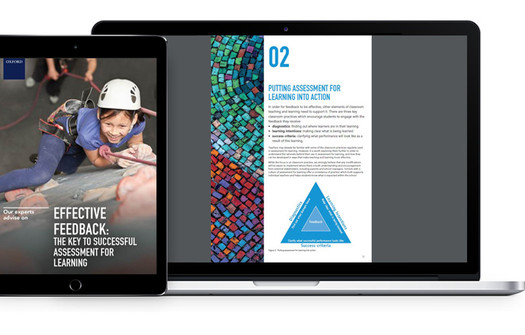
Continuous assessment
A teacher’s companion to continuous and formative assessment.
As of 2022, the LOMLOE requires that assessment in the classroom:
- Be continuous, comprehensive, and formative
- Take into account students’ progress throughout their overall learning process
- Be used as an instrument for improvement for both teachers and learners
On this page, you’ll find everything you need to get started with Continuous assessment, including expert advice, classroom tools and professional development training.
Help learners reach for their goals, accelerate their progress, and go further by embedding Continuous assessment into your daily teaching!
What is Continuous assessment?
Continuous assessment is the practice of using regular assessment activities to gather evidence that will inform teaching and learning decisions. It is sometimes referred as assessment for learning, continuous evaluation, or learner-oriented assessment.
The aim is to gather insights about where the learner is, and identify what their strengths and weaknesses are. This information is in turn used to provide continuous effective feedback, guiding learners to reflect on their learning, take action, and move forward on their learning journey.

Find out more!
Continuous assessment in the LOMLOE
The LOMLOE defines assessment as «continuous, formative and integrative».
In the classroom, this means the need to design evaluations which assess the Key Competences, and implement strategies for Self-assessment and Continuous assessment.
The full teaching notes included in your Teacher’s Guide go into further detail about both Mediation and Competence assessment in your course.

Key & Specific Competences
The aim of developing key competences in the classroom is to provide students with the skills they will need to apply their knowledge and abilities to a variety of future situations (personal, academic, social and professional).
Every subject in Primary and Secondary education also has a series of specific competences. These competences describe the outcomes and skills that students need to acquire in English.
For more information on the specific competences, please consult the programación for your course, available on Oxford Premium.
These competences can be assessed via the specific competences tests and assessment rubrics for your course, also available via Oxford Premium.
Mediation
One of the most significant aspects of the new curriculum is the introduction of mediation. Mediation involves creating connections, transmitting information and facilitating comprehension. The ability to mediate enables students to help people understand.
- The mediation process can take place within the same language or between different languages.
- Mediation involves not only being linguistically competent in the language(s) concerned, but it also means having appropriate mediation strategies.
- Mediation can involve students acting as an intermediary between people, between texts, between types of discourse and between languages, depending on the context.
Continuous assessment in your courses
Students thrive when they understand what they are learning, why they are learning it, and how to improve. Support learners on their path to success with resources to help you share learning objectives, encourage goal setting, and explain the skills being learned.
Continuous assessment is built into every Oxford University Press course. Self-reflection is a prominent feature throughout students’ books, allowing learners of all ages to evaluate their own progress and set their own goals.
Learn more about Continuous assessment in our new titles below.

Primary titles
Secondary titles
Professional development training
Research shows that Continuous assessment practices are among the top ten most impactful elements of classroom teaching, leading to better results and higher exam scores. We are here to help you embed them into your daily teaching with professional development training from our experts.

Discover Assessment for Learning
Watch Gordon Stobart’s webinar on Assessment for Learning and discover three assessment practices which contribute to more effective learning.
Watch nowLearn about Effective Feedback
Watch Elaine Boyd’s webinar and discover the seven key features of effective feedback, with examples to help you implement them in your classroom.z
Watch now
Get expert advice and practical recommendations with our definitive guide to Continuous assessment. Download now and find detailed guidance to help you embed assessment into your daily teaching.
Download Now!Continuous assessment & the LOMLOE
Curious to learn more about the LOMLOE? Our webpage, LOMLOE made easy, helps you every step of the way to understand the new educational reform and implement it into your teaching. We offer webinars, podcasts, Facebook Lives and much more.
Continuous assessment & Oxford Digital
Interested in learning more about how Continuous assessment fits in with our digital offer? Explore Digital Learning with Oxford and discover how the blended solution makes it easy to integrate assessment into your teaching.

